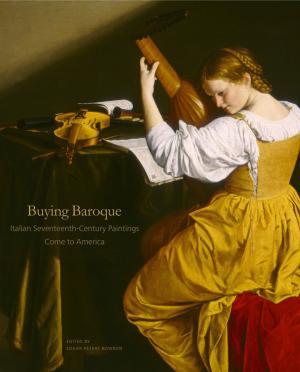Valley Forge
Making and Remaking a National Symbol
Nonfiction, Science & Nature, Nature, Environment, Environmental Conservation & Protection, History, Military, Americas, United States| Author: | Lorett Treese | ISBN: | 9780271074139 |
| Publisher: | Penn State University Press | Publication: | April 4, 1995 |
| Imprint: | Penn State University Press | Language: | English |
| Author: | Lorett Treese |
| ISBN: | 9780271074139 |
| Publisher: | Penn State University Press |
| Publication: | April 4, 1995 |
| Imprint: | Penn State University Press |
| Language: | English |
More than four million people a year visit Valley Forge, one of America's most celebrated historic sites. Here, amid the rolling hills of southeastern Pennsylvania, visitors can pass through the house which served as Washington's Headquarters during the famous winter encampment of 1777–1778. Others picnic and jog in the huge park, complete with monuments, recreated log huts, and modern visitor center, all built to pay tribute to the Valley Forge story.
In this lively book, Lorett Treese shows how Valley Forge evolved into the tourist mecca that it is today. In the process, she uses Valley Forge as a means for understanding how Americans view their own past. Treese explores the origins of popular images associated with Valley Forge, such as George Washington kneeling in the snow to seek divine assistance. She places Valley Forge in the context of the historic preservation movement as the site became Pennsylvania's first state park in 1893. She studies its "Era of Monuments" and the movement to "restore" Valley Forge in the spirit of Rockefeller's enormously popular colonial Williamsburg.
Treese describes a Valley Forge fraught with controversy over the appropriate appearance and use of a place so revered. One such controversy, the "hot dog war," a brief but intense battle over concession stands, was spawned by Americans' changing perceptions of how a national park was to be used. The volatile Vietnam era prompted the state park commission to establish its "Subcommittee on Sex, Hippies, and Whiskey Swillers" to investigate park regulation infractions. Even today, people differ over exactly what happened at Valley Forge during the winter of 1777–1778. The modern visitor sees the remains of over a century of commemoration, competition, and contention. The result, Treese shows, is a historic site that may reveal more about succeeding history than about Washington's army. This book will give its readers a new way to look at Valley Forge—and all historic sites.
More than four million people a year visit Valley Forge, one of America's most celebrated historic sites. Here, amid the rolling hills of southeastern Pennsylvania, visitors can pass through the house which served as Washington's Headquarters during the famous winter encampment of 1777–1778. Others picnic and jog in the huge park, complete with monuments, recreated log huts, and modern visitor center, all built to pay tribute to the Valley Forge story.
In this lively book, Lorett Treese shows how Valley Forge evolved into the tourist mecca that it is today. In the process, she uses Valley Forge as a means for understanding how Americans view their own past. Treese explores the origins of popular images associated with Valley Forge, such as George Washington kneeling in the snow to seek divine assistance. She places Valley Forge in the context of the historic preservation movement as the site became Pennsylvania's first state park in 1893. She studies its "Era of Monuments" and the movement to "restore" Valley Forge in the spirit of Rockefeller's enormously popular colonial Williamsburg.
Treese describes a Valley Forge fraught with controversy over the appropriate appearance and use of a place so revered. One such controversy, the "hot dog war," a brief but intense battle over concession stands, was spawned by Americans' changing perceptions of how a national park was to be used. The volatile Vietnam era prompted the state park commission to establish its "Subcommittee on Sex, Hippies, and Whiskey Swillers" to investigate park regulation infractions. Even today, people differ over exactly what happened at Valley Forge during the winter of 1777–1778. The modern visitor sees the remains of over a century of commemoration, competition, and contention. The result, Treese shows, is a historic site that may reveal more about succeeding history than about Washington's army. This book will give its readers a new way to look at Valley Forge—and all historic sites.















